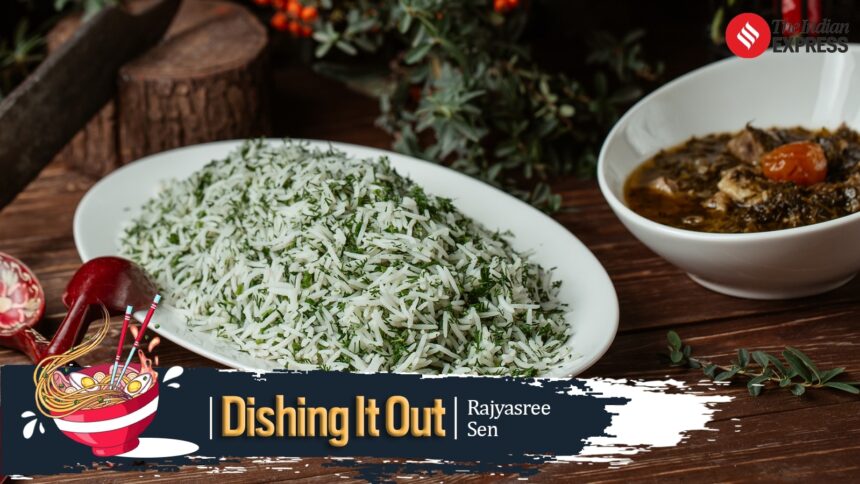Pulaos and biryanis are staples across India, with almost every state offering its version of either one or both. While both have Persian origins, pulao is mentioned in Sanskrit texts and early Tamil literature, dating from the third and sixth centuries. Unfortunately, for purists like me, the Ain-i-Akbari notes very little difference between the preparation of a pulao and a biryani – both use meat stock, for instance.
But today, I don’t want to argue over the finer points of whether a vegetable pulao can qualify as a biryani. Instead, I want to talk about some lesser-known pulaos and rice dishes from India and around the world, dishes I believe are vastly underrated.
Many years ago, I tasted a delicious, spicy, filled with chana dal (split chickpeas). This was Mamri Kaya Pulihora from . More a layered pulao than a biryani, it involved separately cooked rice and dal, which were then mixed with spices, raw mango, cooked chickpeas, and peanuts. A full meal in itself.
Another favourite of mine is Qabooli, with roots in Punjab, Awadh, and . This dish is usually served as an accompaniment to a spicy korma or dal. Rice is cooked with saffron, ghee-fried almonds, whole spices, yoghurt, and milk, resulting in a soft, moist, very fragrant but lightly flavoured rice and dried fruit kedgeree.
Speaking of kedgerees – or khichdis – I chanced upon a wonderful Iraqi kitchri recipe that turns our idea of khichdi on its head. Made with rice and red masoor dal, it includes fried onions, chopped tomatoes, and tomato sauce, and is topped with roasted garlic and cumin. This is quite different from the traditional khichdi cooked in Akbar’s kitchen, which used equal portions of rice, mung dal, and ghee along with spices. Jehangir, on the other hand, enjoyed a rich Gujarati khichdi called lazizan, made with ghee and nuts, on days he abstained from meat.
Fish pulaos, surprisingly, are not exclusive to Bengal or eastern India. They originated in Awadh and Punjab. The coconut and poppy seed-flavoured fish korma pulao or the Sarangyacha pulao – a pomfret pulao from coastal India – are worth trying. As is the Awadhi Jhinga Nariyal ka pulao, a coconut and prawn pulao in which marinated prawns are layered into half-cooked rice and baked in an oven to create a fragrant dish. The Northeast also has its take: Ar Sawchiar, a pulao combining chicken with mustard and celery leaves, finished with a few tablespoons of rice beer or rice wine.
One of my all-time favourites, though, is the Afghani berry pulao, available at . These are not fancy places, but clean, no-frills dhabas set up by Afghan settlers in the city. The pulao is lightly flavoured, cooked in lamb stock, full of soft lamb pieces, and laced with sliced onions and Afghan berries. I strongly recommend visiting one of these places and trying it.
The reason I wanted to dedicate a column to rice dishes is because of a recipe I once came across – and later cooked – by Israeli-born British chef Yotam Ottolenghi: Persian Celebration Rice. It is, in every sense, a celebration of rice. Poached chicken is shredded, the rice is cooked in its broth along with mince, then topped with pomegranate seeds and roasted dry fruits. Just when you think it can’t get better, it’s drizzled with a warm, beaten yoghurt flavoured with the stock, and garnished with fresh herbs. A true centrepiece.
From Iraq to Afghanistan, Israel, and our own states, the fact that rice – whether as pulao, biryani, or khichdi – is a unifying common feature, often made with similar ingredients yet distinct in identity, has always fascinated me. And I haven’t even touched upon paellas, risottos, or the many rice dishes from Africa. Try to find the recipes for the dishes I’ve mentioned, cook them, and taste the similarities and differences.








